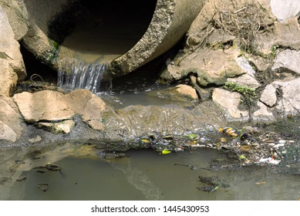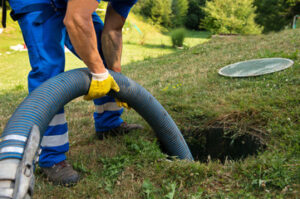When not properly disposed of, liquid waste can threaten the environment, contaminate water sources, and pose health risks.
There are various methods for removing liquid waste. The type of waste will determine which method is best suited for it. Click the Liquid Waste Removal Perth to learn more.

Specific guidelines and regulations govern the generation, storage, transportation, treatment, recycling, and disposal of liquid waste. This is because liquid waste can contain contaminants that are harmful to the environment and human health. The regulations vary by location and jurisdiction but are in place to prevent environmental damage. Failure to follow these guidelines can result in heavy fines for businesses and residents. It is important to work with experienced professionals when storing and disposing of liquid waste.
Liquid wastes are diverse substances that include various fluids, sludges, or semi-liquid materials. They can be generated in several ways, including industrial, agricultural, residential, and household activities. Common examples of liquid waste include wastewater, sewage, oils, greases, and chemicals. In addition, some hazardous wastes can also be considered a type of liquid waste.
There are many requirements for storing and treating liquid wastes, including the use of appropriate containers, labeling and inspections. In addition, flammable liquid wastes require special handling and storage methods to ensure the safety of those working with them. Fire hazards are a significant concern for those who store and dispose of liquid wastes, especially those who operate industrial plants or facilities where such waste is produced.
The disposal of liquid wastes is regulated by local and state governments, as well as the federal Environmental Protection Agency (EPA). Disposal options for liquid wastes may include landfills, treatment or recycling, and land application. Land application involves applying liquid waste to the ground, typically as a way of fertilizing crops or soil. Historically, ocean dumping has been used for liquid wastes, but this method has been discouraged due to the potential for harm to marine ecosystems.
Liquid waste removal companies can collect and transport liquid wastes from a variety of sources, including homes, commercial establishments, and even manufacturing sites. They can then treat the liquid wastes to get rid of impurities and toxins before safely releasing them back into the environment. They can also ensure that the waste is disposed of in accordance with EPA standards.
Hazardous Waste
Liquid hazardous waste is a byproduct of a wide variety of businesses and industries. It can be harmful to humans, animals, and the environment when not disposed of properly. This is why it is important to understand the steps that must be taken when disposing of this waste. This includes separating non-hazardous and hazardous liquids, classifying the waste, and selecting a proper disposal method that complies with regulations.
A hazardous waste material is any substance that presents a risk to human health or the environment and is not readily biodegradable. It may be in a liquid, sludge, gas, or solid form. It can be generated by a wide range of sources, including laboratories, water treatment systems, manufacturing, automobile garages, and hospitals. Hazardous waste can have many effects on the environment, including contaminating water streams and soil, causing toxic fumes, and posing health risks to people and animals.
Toxic liquid wastes can be a problem for water streams and groundwater, and they are also often found in the air. Unless it is dealt with quickly, the toxins can seep into the surrounding soil and water, potentially affecting animals and humans.
If a business generates hazardous liquid waste, there are certain procedures that must be followed when disposing of it. It is not acceptable to dispose of these substances in the general waste stream. They must be stored in a special facility that is designed to prevent spills and leaks, and it must be carefully classified based on the potential impact on human health and the environment.
The classification process is outlined in the Resource Conservation and Recovery Act, which provides a set of handling and disposal procedures for waste materials that have been categorized as hazardous. To be classified as hazardous, a material must be ignitable, reactive, corrosive, or toxic.
Once the liquid waste has been classified, it can be treated and disposed of using one of several methods. One of these methods is dewatering, which dries the waste by removing its liquid content. This technique is useful for reducing the volume of the waste and making it easier to transport and store.
Septic Tanks
A septic tank is used when homes are not connected to a city sewer system. It is an underground, watertight container that stores sewage until bacteria break it down and it can be absorbed into the ground. These systems are often needed in rural areas where wastewater cannot be carried to a treatment plant.
Wastewater flows into the septic tank through an inlet pipe, and it is kept there until it enters the sludge layer. Solid materials sink to the bottom of the tank, while oils and grease float on top to create scum. Bacteria inside the septic tank break down these materials to prevent them from reaching the drain field area and damaging it.
After the sludge and scum layers have settled, liquid wastewater leaves the septic tank through an outlet pipe. A baffle or a sanitary tee, which is a small T-shaped piece of plastic, is located at the end of this pipe. This baffle prevents sludge and scum from entering the wastewater that flows out of the tank into your drain field area, clogging the perforated pipes there. The baffle also prevents the scum and sludge from reaching your absorption field and poisoning local wildlife and humans.
The baffle or sanitary tee should be cleaned when the septic tank is pumped out to avoid contamination. You should never enter the septic tank to clean it or replace the baffles. Only qualified professionals should handle these tasks.
As septic tanks age, they will need to be inspected and maintained to keep them working properly. When septic systems fail, wastewater can spill into nearby drinking water wells or flow into local waterways. The toxins in sewage can harm wildlife and humans, contaminating groundwater supplies and creating dangerous bacterial and viral illnesses. In addition, excess nutrients in failing septic systems can cause algae to grow in waterbodies and use up the oxygen that aquatic organisms need to survive.
The most important step in keeping your septic system healthy is to have it pumped regularly. If you notice that sewage is seeping out of your toilets, you should schedule a pump-out immediately.
Incineration
In some cases, liquid waste is disposed of through incineration. This process is very efficient, as it produces energy and minimizes the amount of waste material that needs to be landfilled. However, it is still important to follow the proper procedures in order to ensure that the facility is compliant with environmental regulations.
Many different factors can influence the composition of the waste stream that is fed into incineration facilities. Different waste reduction, reuse, recycling, and composting strategies will influence the quantity of hazardous and non-hazardous materials that will need to be incinerated or landfilled. Regulations that forbid land disposal of hazardous wastes are also likely to increase the quantity of hazardous material directed toward incinerators, boilers, and furnaces.
The combustion of incinerated waste materials generates a number of atmospheric emissions that must be controlled. These include particulate matter, acidic gases and aerosols, metals, and organic compounds. The latter category may be composed of toxic and semi-toxic substances, including 2,3,7,8-tetrachlorodibenzodioxin.
Emissions from incineration plants are typically measured using a continuous emission monitoring system, which is designed to continuously record and monitor the concentration of certain pollutants. These systems are also used to determine compliance with air quality standards and emission limits.
Most of the atmospheric emissions from incinerators can be attributed to waste combustion and heat recovery processes. However, some of the emissions can be traced back to other plant activities, such as waste storage, feed preparation, and gas temperature reduction (which may involve energy recovery operations).
Depending on the type of incinerator being operated, there are different requirements for the control of these emissions. For example, the emissions from a medical-waste incinerator cannot exceed certain limits under normal operating conditions. This is because some medical wastes are considered to be highly infectious and pose a risk of causing disease or infection in humans.
In addition, other chemicals may be released in the course of incineration. For example, some incineration plants are required to meet strict emission limits for beryllium. These plants are required to measure and report beryllium emissions using a continuous emission monitoring system.
